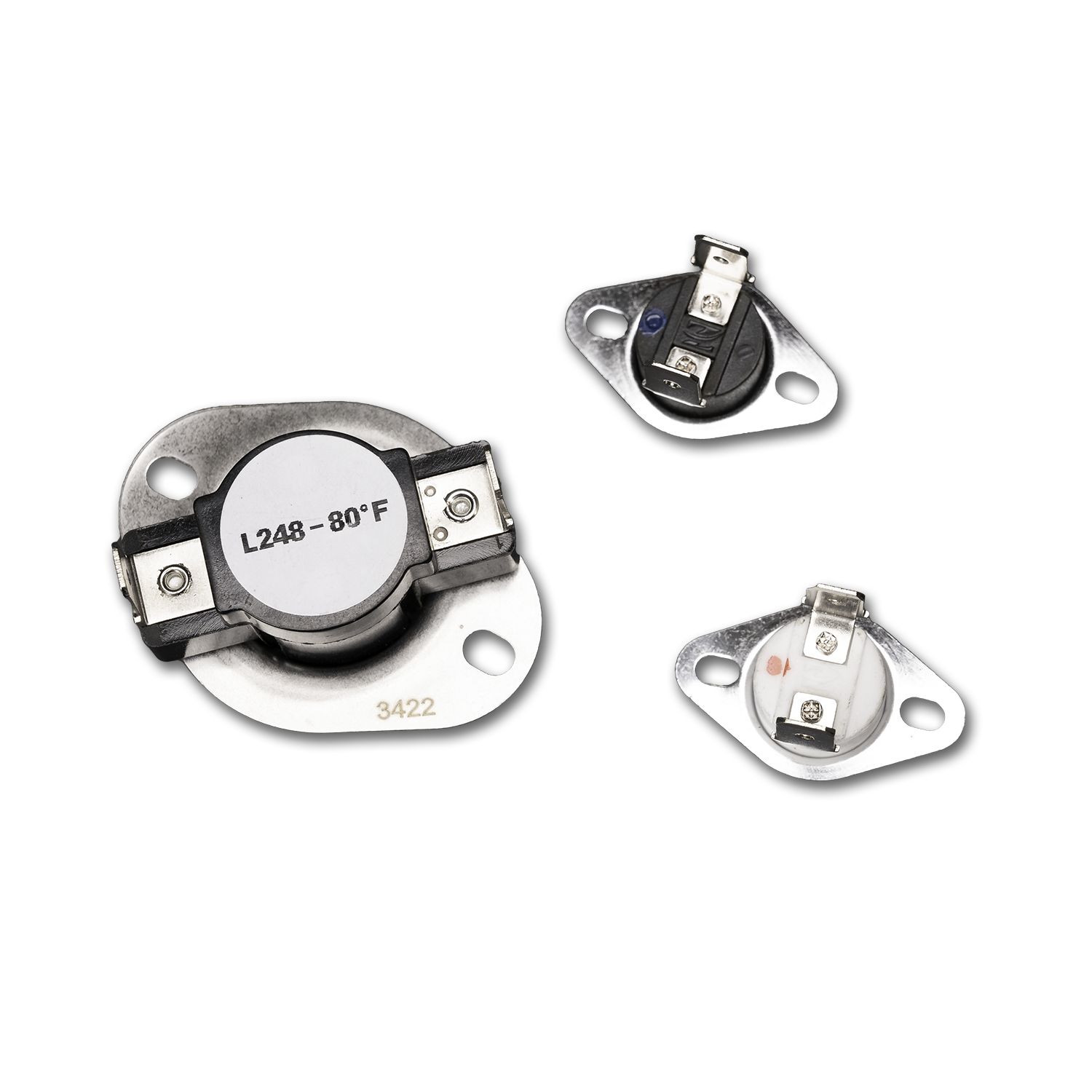

The thermal’s furthest back on theĬan, behind the safety tstat. Whirlpool/KM 27-inch (wide) dryers: Mounted on the side of the element Here are the two most popular thermal cutouts used Can be bypassed to test just like the others, though. That one’s a skinny little fellow, about 1-1/4 inches long by approx ¼ inch wide, mounted to the blower housing in back, next to the control tstat(s).

Note: on WPL/KM 29-inch GAS models, keep in mind that the thermal device that controls heating (it’s the ‘thermal cutout’ and controls the motor in electric models) is in the back, and looks different. This one’s the device mounted highest on the side of the ‘can’, directly above the safety thermostat, which is down near the element leads. Whirlpool – made 29-inch (wide) machines (Most Kenmores, Kitchenaid, Roper, Estate): you’ll find the thermal fuse ‘reading’ the heating element’s temperature from the side of the ‘can’ where the element lives, in the back of the dryer. So how do I locate my thermal fuse, you ask? Well, that depends on which brand dryer you own. It’s one device that has to be there, and it just might save your house from fire. Resist the temptation to leave it bypassed and not replace it. I’ve seen a lot of homes saved from fire by these simple little devices, so I must emphasize this. L to R, they're: Whirlpool/KM, two Frigidaires, older Speed Queen, and Here are several common dryer thermal fuses. Please, please note this is only to be done temporarily to test the thermal. If the dryer now heats, you immediately know it’s open and should be replaced.

To test one, leave it in the dryer, power the dryer down, bypass the thermal device, and power up and run the dryer with it bypassed or jumpered. Being just a simple ‘on/off’ switch that happens to be sensitive to a specific temperature, they’re either closed (good) or open (bad). The good news is, these thermal devices are one of the easiest components in the dryer to test. Just to keep life interesting, the Whirlpool system uses the thermal device that we commonly call the ‘cutoff’ to control the gas ignition system, instead of a thermal ‘fuse’) (One exception to this generality is most Whirlpool – built gas dryers. When you hear ‘thermal cutoff’, it normally refers to a similar little device installed in the motor circuit, and that one shuts down the motor in an over-temperature condition. In a clothes dryer, the term ‘thermal fuse’ usually refers to the device used in the heating circuit, directly controlling the dryer’s heat source. Unlike electrical fuses or circuit breakers, thermal fuses only react to excessive temperature, not excessive current, unless the excessive current is high enough to cause the thermal fuse itself to heat up to the trigger temperature. They disconnect the flow of current to the heating element in case of malfunction (such as a defective thermostat or clogged dryer vent) that allows the temperature to rise to dangerous levels, possibly starting a fire. In addition to their legally mandated application in modern clothes dryers (since the 1980’s), thermal fuses are used as safety devices in other heat-producing appliances like coffee makers and hair dryers. Unlike a thermostat, which automatically resets itself when the temperature drops, thermal fuses are more like their cousins, electrical fuses, another single-use type device that can’t be reset and must be replaced when it fails or is triggered. Thermal fuses, or thermal cutoffs, are small electrical temperature sensitive ‘switches’ designed to interrupt electrical current flow when heated to In those cases, the thermal fuse is just doing the job it was designed for. OK, to be fair, this failure’s usually not the thermal fuse’s fault, but the real cause lies in a partially (or completely) clogged dryer vent system. (Note: to satisfy the legal guys, I have to first point you toward my 'disclaimer' when providing this kind of information): My Disclaimer Tell you about the second most common cause of the problem – the thermal fuse (actually, these days, I think the numbers of open elements and blown thermal fuses are running about even in electric dryers). I get a ton of questions from folks with ‘no heat’ dryers, and thought I’d
#Dryer fuse how to
What it does, How to Test it, Where to Find it


 0 kommentar(er)
0 kommentar(er)
